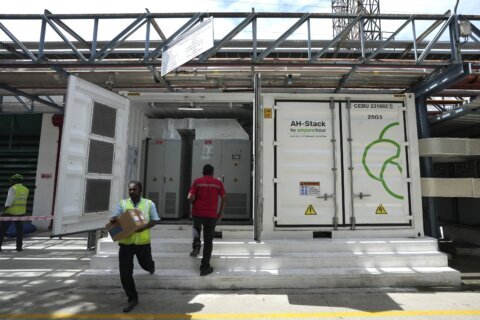In less than a week, two major banks failed, forcing financial regulators to step in. The collapse of Silicon Valley Bank marked the second-largest U.S. bank failure in history. Two days later, the demise of Signature Bank marked the third-largest failure.
A joint statement by the Department of the Treasury, Federal Reserve and Federal Deposit Insurance Corp. on March 12 announced that account holders would be fully protected and receive their funds starting the next day. Furthermore, taxpayers would not be responsible for covering any losses.
While that’s a bright spot in an otherwise grim scenario for customers whose cash had been in limbo, it leaves many consumers wondering if additional banks might fail and whether their money is safe. Learn what role the FDIC takes to calm jitters and protect your money.
[Read: Best Online Banks.]
How Did These Bank Runs Start?
Silicon Valley Bank was the nation’s 16th-largest bank and was popular among venture capital firms and startups. Thanks to a surging tech sector, deposits at the bank skyrocketed; it held $209 billion in assets as of December 2022.
Those deposits had been invested in U.S. Treasury bonds and mortgage-backed securities, which were attractive investments at the time thanks to low interest rates. The problem: “They invested massively in these securities right at a time when interest rates were moving up and the value of those long-term bonds dropped,” says Pam Krueger, founder and CEO of Wealthramp, a financial technology platform. At the same time, the tech sector began struggling, and Silicon Valley Bank customers had to turn to their savings to cover the bills.
On March 8, Silicon Valley Bank announced it had been forced to sell those Treasury bonds at a loss — to the tune of $1.8 billion — as customers continued to take out money. This triggered an old-fashioned run on the bank the next day, when customers withdrew $42 billion in 10 hours.
By March 10, the bank was no longer sustainable, so regulators had to take over and close it down. Friday also saw a run at Signature Bank, where customers withdrew $10 billion in deposits after watching the collapse of Silicon Valley. Two days later, regulators also closed Signature Bank.
[See: Best Credit Unions]
How the FDIC Steps in After a Bank Failure
The sudden failure of these two banks gave many people flashbacks to the Great Recession, during which nearly 200 banks failed. However, Krueger says that Silicon Valley wasn’t systemically tied to other banks like the Wall Street meltdown, so we won’t see the same kind of disastrous ripple effect across the banking industry.
Meanwhile, the FDIC, an independent agency created to maintain stability and public confidence in the nation’s financial system, is taking steps to mitigate the damage.
“When a bank faces risk of failure, the FDIC is usually aware of that likelihood and has already prepared for potential resolution,” says Jared Tully, partner and leader of the community bank and financial institutions team at Frost Brown Todd, a law firm based in Cincinnati. The FDIC will work closely with the bank’s management team to address any issues, he adds.
In the case of Silicon Valley, however, things went south quickly, and the FDIC was put on damage control. “As such, the FDIC began working to protect depositors while simultaneously looking for longer-term solutions,” Tully says.
How FDIC Insurance Works
The FDIC guarantees deposits of up to $250,000 (or $500,000 for joint accounts) per depositor, per institution. When a bank fails, the FDIC often becomes the receiver of its deposits and then arranges for another, healthy bank to take over management. Alternatively, the FDIC may cover the deposits directly and send out checks for the funds held at the now-defunct bank.
By law, once insured depositors are paid, uninsured depositors are paid next if there are additional funds available. That’s followed by general creditors and then stockholders, which in most cases, results in little or no recovery at all.
In the case of Silicon Valley and Signature banks, the FDIC decided that deposits would be guaranteed beyond the $250,000 cap to instill consumer confidence and prevent further bank runs. Most deposits at the two banks were uninsured — 95% at Silicon Valley and 90% at Signature. The FDIC will avoid relying on taxpayer funds to cover these losses by levying an additional fee on banks instead.
The Fed also created a new emergency lending program with generous terms to prevent banks, credit unions and other financial institutions from failing for similar reasons. It will loan money to banks for up to one year against the face value of bonds used as collateral, rather than the market value. This will allow banks to cover any rush of customer withdrawals without having to sell assets at a loss.
[Read: Best Savings Accounts.]
Protecting Your Deposits
In light of recent events, Krueger says it’s important for those who have deposits over the FDIC limit at small banks to look closely at the bank’s solvency. Even better, you should avoid holding funds in excess of the FDIC insurance cap and spread your funds across multiple institutions, though it is possible to insure your funds for more than the FDIC limit.
Additionally, be sure that you are, in fact, working with an FDIC-insured bank, since not all institutions are covered. You can look up your bank to confirm it is insured. Credit unions are insured by a similar institution, NCUA, at the same $250,000 level.
More from U.S. News
How Do You Insure Funds More Than the FDIC Limit?
6 Scams That Target Your Bank Account
Best Ways to Send Money Online Instantly
How the FDIC Protects Your Money After a Bank Run originally appeared on usnews.com







